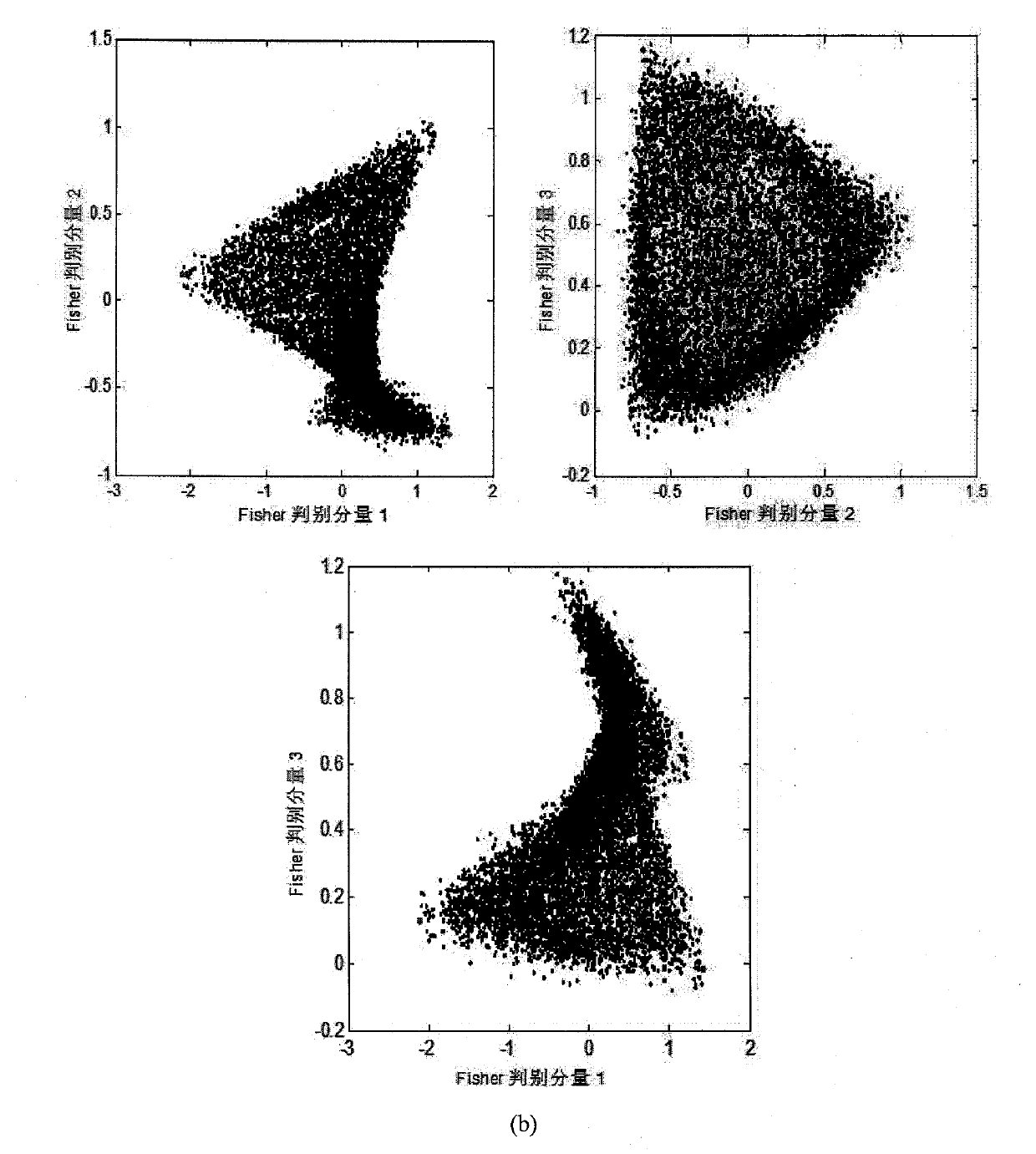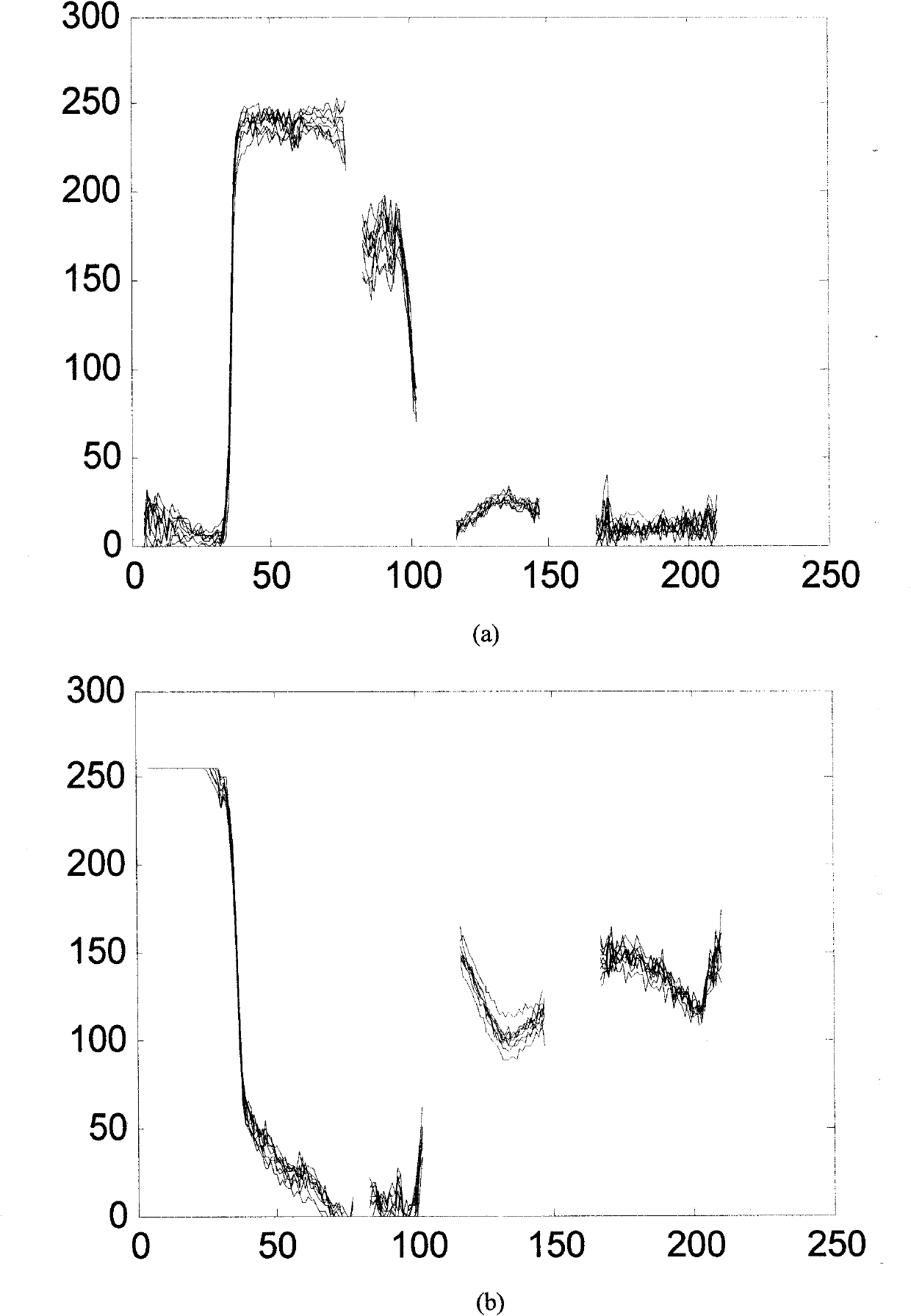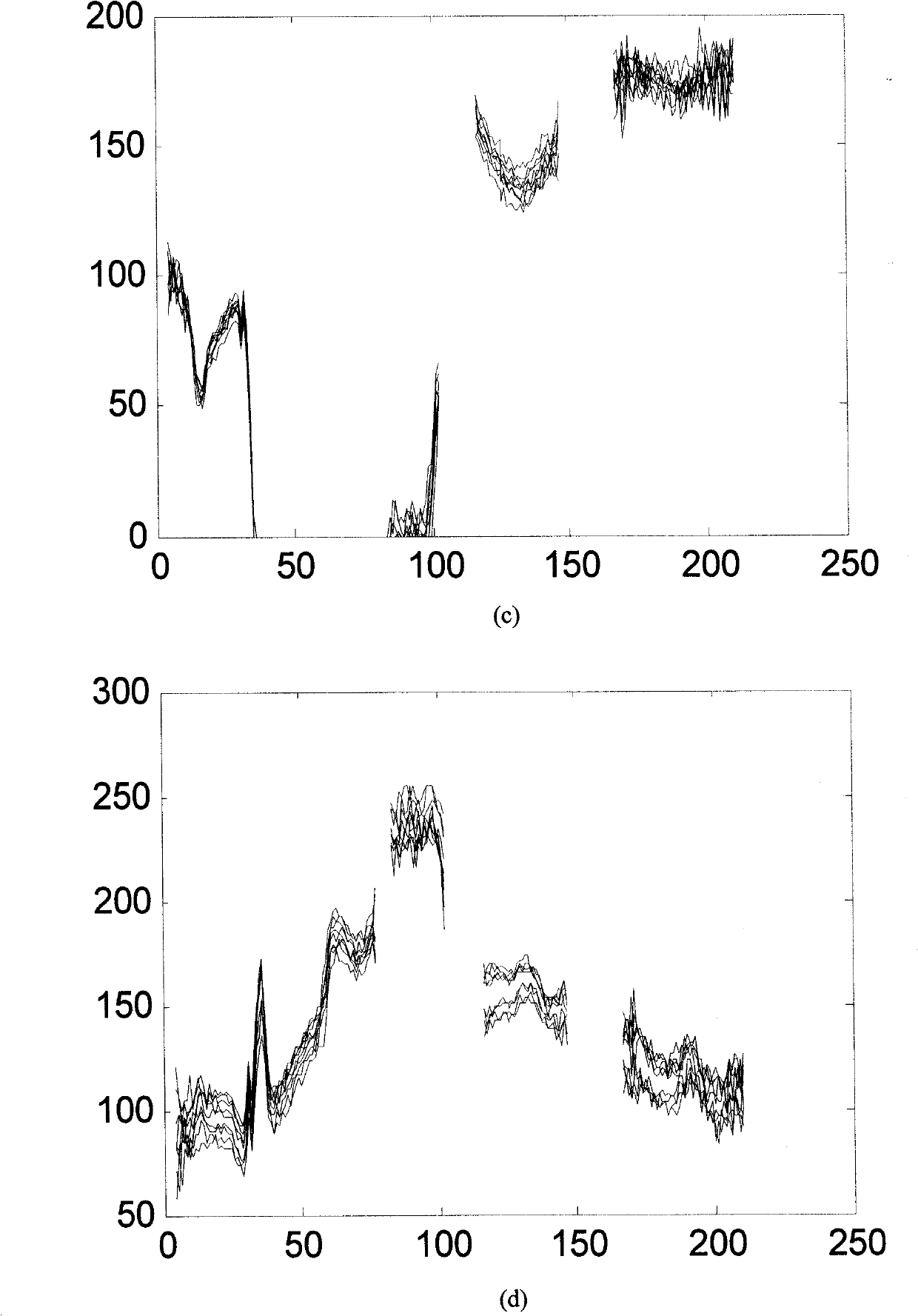Fisher judged null space based method for decomposing mixed pixels of high-spectrum remote sensing image
A technology of hyperspectral remote sensing and image mixing, applied in the field of hyperspectral remote sensing image mixing pixel decomposition, which can solve the problem of unclear physical meaning of spectral processing methods.
- Summary
- Abstract
- Description
- Claims
- Application Information
AI Technical Summary
Problems solved by technology
Method used
Image
Examples
Embodiment approach
[0076] 1. Simulate remote sensing image data
[0077] In order to test the results and accuracy of Fisher's discriminative null space algorithm, this paper designs a simulated hyperspectral image data experiment. From the AVIRIS data in the Indiana area, 9 pure pixel spectra of 4 types of ground objects (hay, artificial buildings, corn, and soybeans) were extracted as experimental samples to simulate the phenomenon of different spectra of the same object, such as figure 1 shown. After removing water absorption bands and noise bands (bands 1-4, 78-82, 103-115, 148-166, and 211-220), the remaining 169 effective bands were used to simulate hyperspectral remote sensing data.
[0078] figure 2It is a schematic diagram of simulating four kinds of endmember abundance images used in the experiment, and its size is 101×101 pixels. The 6×6 pixel area at the vertex with the highest brightness in the abundance map is 9 pure pixel samples of the feature, and each sample occupies 4 pixe...
PUM
 Login to View More
Login to View More Abstract
Description
Claims
Application Information
 Login to View More
Login to View More - R&D
- Intellectual Property
- Life Sciences
- Materials
- Tech Scout
- Unparalleled Data Quality
- Higher Quality Content
- 60% Fewer Hallucinations
Browse by: Latest US Patents, China's latest patents, Technical Efficacy Thesaurus, Application Domain, Technology Topic, Popular Technical Reports.
© 2025 PatSnap. All rights reserved.Legal|Privacy policy|Modern Slavery Act Transparency Statement|Sitemap|About US| Contact US: help@patsnap.com



